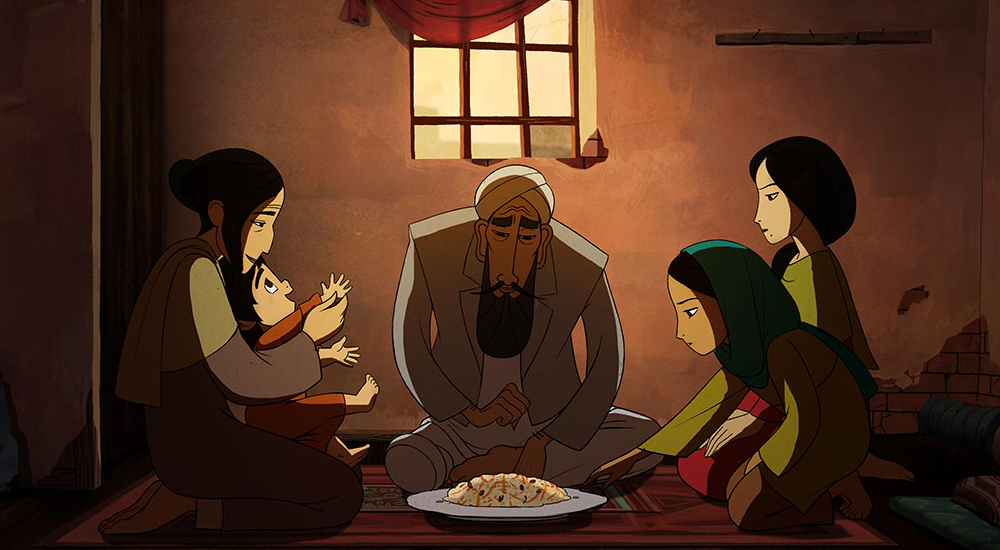“It is rain that makes the flowers grow, not thunder.”
Based on Deborah Ellis’ award-winning novel, Nora Twomey’s The Breadwinner is a truly unique film that pays respect to its source material. Told through the eyes of an 11-year-old Afghan girl, the rich animation gives way to tremendous storytelling, revealing the power that lies within love, family and courage.
Best known for her work on 2009’s The Secret of Kells, Twomey has a history of remarkably complex and busy animation. She brings that experience to the forefront here as she employs a mixture of texture and style, giving us a truly remarkable story that is both intellectual intriguing and visually stimulating.
Set in the Taliban-controlled city of Kabul, The Breadwinner centers on Parvana, a young woman whose father has forgone the countries customs. Showering them with love and affection, he has taught the women in his family to read, write, and most of all, dream. But when he is wrongfully imprisoned by a former student, Parvana’s life is struck by a long line of misfortunes.
It is at this moment that Twomey does her most brilliant work. Instead of sending Parvana into a deep, dark hole, she gives here a voice of reason and a fighter’s intuition. Building on the lessons her father taught her, our heroine fights against the customs, taking matters into her own hands as she finds a way to walk about town, find work and purchase food - all the while attempting to free her father. Seamlessly becoming the family’s breadwinner, Parvana serves as a beacon of light within the dark times that have engulfed her family.
Twomey masterfully captures the rough and vicious landscape that is Kabul. Without digging too hard into the politics she permits Parvana’s story to do the talking, entrusting her audience to listen and piece together the details on their own. The film educates without lecturing, and the storytelling radiates a bold sense of imagination, proving just how high one can fly when their mind is allowed to dream.
Within the first few weeks we witness a child transform into a woman. Her voice, once a wide spraying rebellion chant without a centered purpose, suddenly has intent and direction. And our lead protagonist shows how one can fight the system without violence, evoking the use of storytelling to dig deep within her own soul, find her inner courage, and rise to the occasion. The storytelling opens the film to other mediums of animation as well, providing a plethora of designs and techniques that bring a new, positive spirit to the story.
If the animation doesn’t attract you to this incredible film then the story itself should. Though told through a young woman’s eyes, the message of love, family and courage translates to all. Much like her own, Parvana’s love of stories and ability in which to share them is nothing short of inspirational.

